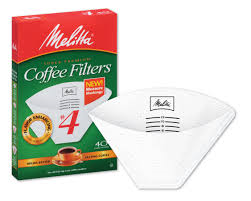Today is National Coffee Day! Over 50 percent of the American population consumes coffee, with the average coffee drinker drinking 3.1 cups of coffee, driving an $18 billion coffee market.
While the exact origin of coffee has been the center of debate for centuries, there is one Ethiopian legend that many seem to associate with its creation. As the story goes, a goat herder noticed his goats eating red berries and behaving excitedly afterward so the goat herder decided to try some of the berries himself. He too saw the effects the berries had on him and brought some back to his monastery. The chief monk did not approve of the berries and ordered they be thrown in the fire. The other monks noticed an alluring aroma coming from the fire and discovered the berries had become beans. They removed the beans from the fire, ground them up, added water and voilà coffee.  Coffee has come a long way since its discovery. One of the first American coffee patents was a COFFEE MILL, created by inventor and dentist Thomas Bruff and granted on January 8, 1798. The mill used two “teeth” to grind the coffee beans, which created coffee grounds. Typically, coffee grounds were mixed with water and consumed without the grounds being filtered. Melitta Bentz, a German housewife, was frustrated she had to drink her coffee this way and decided to invent something to prevent the grounds from being mixed in with the water. That led to the creation of the first coffee filter. Bentz’s filter was placed in a cone-shaped cup, and the grounds were placed in the filter. Hot water was then poured over the grounds, and the coffee dripped through the filter while the grounds remained trapped. The Berlin Patent Office granted Bentz the patent registration for FILTER TOP DEVICE LINED WITH FILTER PAPER on July 8, 1908. Shortly after that, Bentz went into business with her husband and opened Melitta®, a coffee filter company which is still in operation today.
Coffee has come a long way since its discovery. One of the first American coffee patents was a COFFEE MILL, created by inventor and dentist Thomas Bruff and granted on January 8, 1798. The mill used two “teeth” to grind the coffee beans, which created coffee grounds. Typically, coffee grounds were mixed with water and consumed without the grounds being filtered. Melitta Bentz, a German housewife, was frustrated she had to drink her coffee this way and decided to invent something to prevent the grounds from being mixed in with the water. That led to the creation of the first coffee filter. Bentz’s filter was placed in a cone-shaped cup, and the grounds were placed in the filter. Hot water was then poured over the grounds, and the coffee dripped through the filter while the grounds remained trapped. The Berlin Patent Office granted Bentz the patent registration for FILTER TOP DEVICE LINED WITH FILTER PAPER on July 8, 1908. Shortly after that, Bentz went into business with her husband and opened Melitta®, a coffee filter company which is still in operation today.
One of the first coffee makers was invented around 1810 by Sir Benjamin Thompson, a British physicist, and soldier. This percolator-style of coffee maker was improved upon and first patented in the United States by James H. Nason in 1865 (U.S. Patent No. 51,741). His percolator used a downward flow method to allow the steam and aromas to remain in the coffee pot, which allowed for a better coffee flavor. Some coffee drinkers still prefer to use this method today.
A more recent innovation in the coffee industry is the invention of single brew filters by Keurig®. Keurig has changed the way cups of coffee are brewed with the BEVERAGE FILTER CARTRIDGE (U.S. Patent No. 5,325,765), which Keurig refers to as a “K-Cup.”
 In addition to advances in coffee brewing technology, there has been a significant growth in the number of coffee shops in America. While it may not be everyone’s favorite, Starbucks is one of the most popular and widely recognized coffee shops in the world. Their signature mermaid enclosed within a green circle was trademarked in 1971 and is still used today (Registration No. 1417602). Starbucks is also the holder of multiple patents, including a design patent for a unique hourglass-shaped COFFEE BREWER (U.S. Patent No. D606,805) and a patent for their famous drink sleeve that keeps your hands cool while holding the cup, INSULATOR SLEEVE FOR A BEVERAGE CONTAINER (U.S. Patent No. 7,922,031). Starbucks also has a patent on its mobile ordering system MOBILE BASED VOICELESS DRIVE THROUGH ORDERING SYSTEM AND METHOD (US 2013/0024299).
In addition to advances in coffee brewing technology, there has been a significant growth in the number of coffee shops in America. While it may not be everyone’s favorite, Starbucks is one of the most popular and widely recognized coffee shops in the world. Their signature mermaid enclosed within a green circle was trademarked in 1971 and is still used today (Registration No. 1417602). Starbucks is also the holder of multiple patents, including a design patent for a unique hourglass-shaped COFFEE BREWER (U.S. Patent No. D606,805) and a patent for their famous drink sleeve that keeps your hands cool while holding the cup, INSULATOR SLEEVE FOR A BEVERAGE CONTAINER (U.S. Patent No. 7,922,031). Starbucks also has a patent on its mobile ordering system MOBILE BASED VOICELESS DRIVE THROUGH ORDERING SYSTEM AND METHOD (US 2013/0024299).
Whether you live and breathe coffee, or simply enjoy the occasional cup, take time today to appreciate how far coffee has come with the help of inventors and intellectual property.